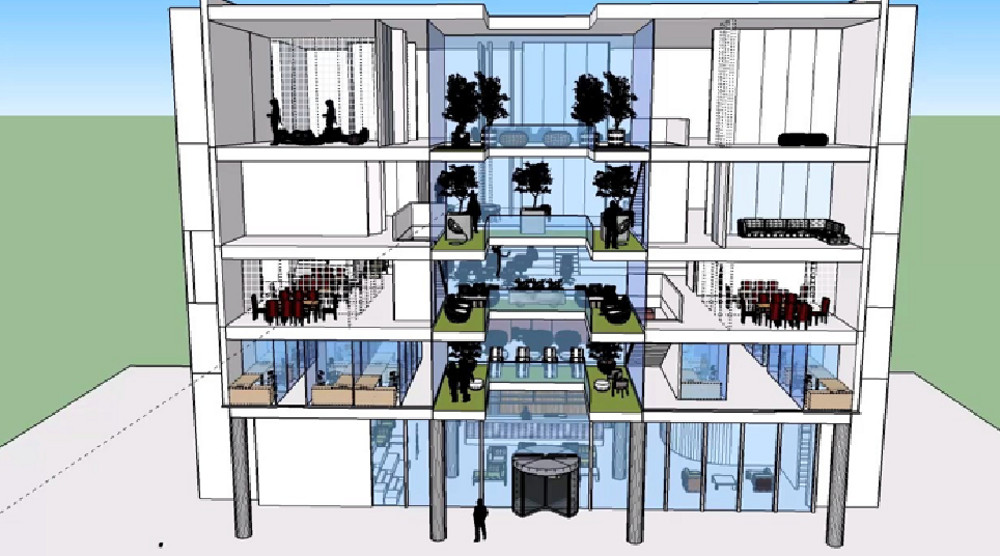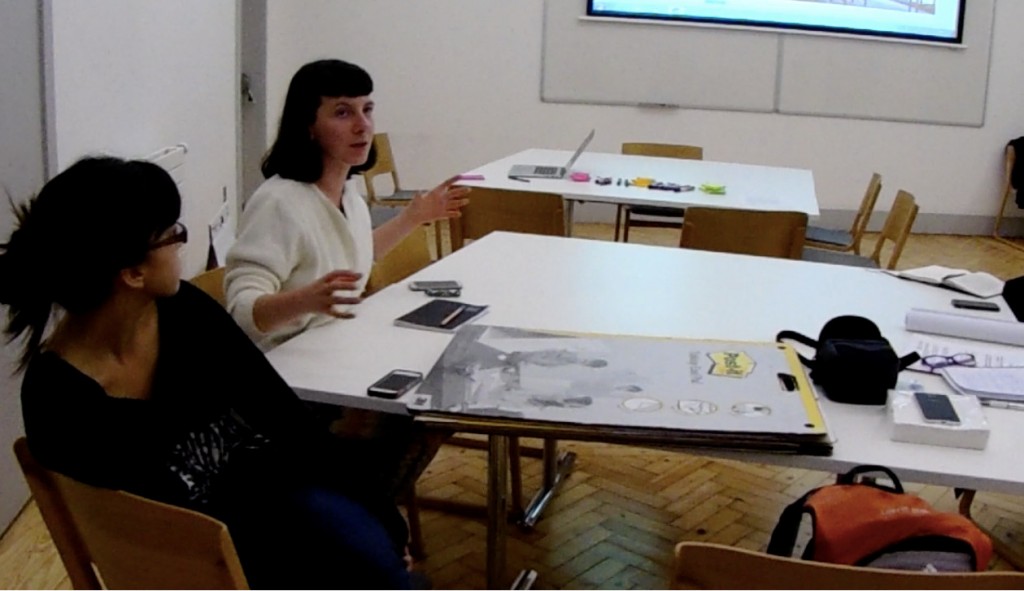
Building Futures, an inspiring exhibition resulting from the collaborative efforts of two student groups, featured at the Planetary Health Conference held at the University of Edinburgh on 29-31 May. The partnership project resulted from a collaboration between Department for Social Responsibility and Sustainability (SRS) and the MSc Advanced Sustainable Design thanks to its director, John Brennan. We also obtained an Innovation Initiative Grant to fund the final student exhibition. The project tasked John’s MSc students with re-envisioning 7 Bristo Square on central campus not only for sustainability and climate change adaptation in 2030, but also considering new learning and teaching methods that could define student spaces in the future.

The Design Brief: function-led rooms, informal spaces and nature

With help from SRS networks, seven student volunteers from a wide range of disciplines were recruited as a commissioning group for the project. Their main task was to develop a design brief to guide the MSc students’ work. Callum Robertson (University Estates) led a site visit to Bristo Square to orient the volunteer and design students. Callum pointed out first-hand the key issues that needed solving, such as disabled access and creating more effective, sustainable and exciting use of internal space. We then gathered the commissioning group students for the kick-off design brief development workshop.
After a long discussion, the commissioning group decided on three themes to redefine the redesign of the building, with sustainability engineering left to the design students:

Design Development
Seven groups of MSc design students, two students per group, brought to life the vision of the volunteer commissioning group, engaging in diverse ways with the three themes of the design brief. Design students presented their interim designs for critique to the commissioning group at a pecha kucha session, and refined their work for final submission in Semester 2. Interim designs considering nature particularly captivated the commissioning group:

Creating the Final Exhibition
In Semester 2, the commissioning group reviewed the final designs prepared by the MSc students to choose hero images and elements of the projects that best exemplified the brief:

These images and elements would be pulled together for the final exhibition. A video would form part of the final exhibition, presenting raw footage in a process narrative showing stages students worked through as well as interviews:
Building Futures: creating collaborative sustainable places for learning from CAHSS Webteam on Vimeo.
The commissioning student group decided that they wanted the exhibition to show the process and the product – the final chosen designs – from that process.
John hired two students, Rosie and Caitlin, to develop this idea in time for the Planetary Health Conference and an audience of almost 400 attendees. They did an amazing job of creating a unique and memorable exhibition using images of 7 Bristo Square, elements of the design brief, quotes from students about the project process and the final designs chosen by the commissioning group. A full catalogue of all student work, including the exhibition design, is downloadable from the Advanced Sustainable Design website.
Going Forward
During this living lab project, students from different backgrounds collaborated to transform their learning spaces, with the freedom to imagine solutions beyond constraints. Estates colleagues are already engaging with the catalogue of designs in discussions with students across University campuses about learning, teaching and study spaces. It serves as a resource in considerations of refurbishments and repurposing going forward.
Please get in touch if you are a student who would like to participate in a living lab project of this kind, or if you are a staff member keen to develop a similar collaborative model.
Our thanks to:
Commissioning group (volunteer) students
Pelagie Couoyer, Clifton Esteban, Ziye Lu, Ana Martinez, Lizzie Rhoades, Kelly Thompson, and Danlei Zhou.
Design students
Peiling Cai, Yifan Huang, Sara Kliczka, Aning Kuswinarni, Elfi Lempida, Andreas Makas, Mariela Martinez, Claudia Mucino, Mayela Salazar, Lucia Savastano, Elizabeth Seaver, Yuanyue Sun, Gayathri Vasu, and Qingqing Zhang.
Staff workshop attendees
Andy Arnott (Department for Social Responsibility and Sustainability), Callum Robertson (University of Edinburgh Estates), David Seel (Design Tutor), and David Somervell (ECCI Sustainability Advisor).
Also huge thanks to:
Caitlin McLeod and Rosie Milne for Exhibition Design and Production, and Barrie Williams for video production.

This project was supported by alumni and friends of the University through an Innovation Initiative Grant.

